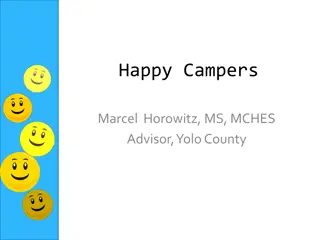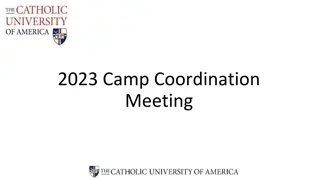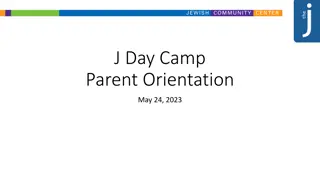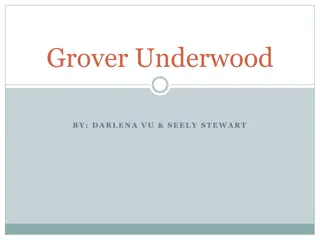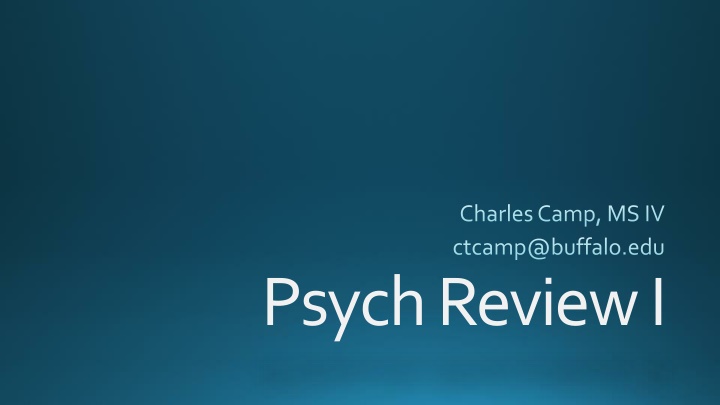
Key Points in Mental Status Examination for Psychosis and Schizophrenia
Explore the critical aspects of Mental Status Examination focusing on appearance, mood, affect, thought form, and thought content in individuals with psychosis and schizophrenia. Gain insights into assessing cognition, insight, and judgment, essential for understanding and managing these conditions effectively.
Download Presentation

Please find below an Image/Link to download the presentation.
The content on the website is provided AS IS for your information and personal use only. It may not be sold, licensed, or shared on other websites without obtaining consent from the author. If you encounter any issues during the download, it is possible that the publisher has removed the file from their server.
You are allowed to download the files provided on this website for personal or commercial use, subject to the condition that they are used lawfully. All files are the property of their respective owners.
The content on the website is provided AS IS for your information and personal use only. It may not be sold, licensed, or shared on other websites without obtaining consent from the author.
E N D
Presentation Transcript
Charles Camp, MS IV ctcamp@buffalo.edu Psych Review I
Goals Give a broad overview of preceding material Distill content to the most important, exam-relevant information Provide an open forum for questions and clarifications Use these reviews as a guideline for your studying!
Topics Mental Status Exam Psychosis and Psychotic Disorders Schizophrenia Antipsychotics
Mental Status Exam Appearance age, hygiene, physical characteristics, dress Attitude/Activity cooperativity, eye contact, calm/agitated, movement Mood predominant internal emotional state, quoted from the patient Affect expression of that emotional state, as observed by the clinician Speech volume, rate, spontaneity, articulation, semantics Thought Form thought organization Thought Content thought substance Perception illusions, hallucinations, depersonalization, autoscopy, d j vu, jamaisvu Cognition AOx3, concentration, registration, short/long-term memory, construction, abstraction Insight patient s understanding of their illness, behavior, and benefits of treatment Judgment consideration before action
Mental Status Exam Affect emotional expression as observed by the clinician Congruency with stated mood Appropriateness with conversation content Intensity level of expression Blunted = minimal expression Flat = no expression Range emotional spectrum displayed by the patient Full or restricted Mobility fluidity/ease of movement through that spectrum Labile > Mobile > Fixed Reactivity responds appropriately to shifts in conversation content
Mental Status Exam Thought Form thought organization Organized Peculiarities of Form Clang Associations Echolalia/Palilalia Neologisms Thought blocking Perseveration Circumstantial Tangential Flight of Ideas Loosening of Associations Word Salad
Mental Status Exam Thought Content thought substance Delusions fixed, false beliefs not shared by peer group Bizarre couldn t happen within our current reality Non-bizarre could happen within our current reality Overvalued Ideas delusions you can reason with Suicidal/Homicidal Ideations Obsessions intrusive, persistent ego-dystonic thoughts Preoccupations Magical ( superstitious ) thinking Ideas of reference believing innocuous events have strong personal significance
Psychosis Impaired sense of reality characterized by: Hallucinations Delusions Disorganized thought/speech Disorganized behavior Not a diagnosis! A symptom of an underlying disorder or substance.
Schizophrenia Chronic or recurrent disorder characterized by: Sustained periods of psychosis, a.k.a. positive symptoms (~1 month) Negative symptoms Long-term deterioration in functional ability Symptom duration of at least 6 months Risk Factors Family Hx (genetics) Obstetric complications Infection, winter birth Immune factors Nutritional factors Cannabis/drug use Immigration Advanced paternal age Epidemiology ~1% prevalence 1.4 Men : 1 Women Starts in 20 s Suicide: - 20-50% attempt - 5-6% succeed Concordance Rates Twins, both parents 50% Siblings, 1 parent 10%
Schizophrenia Positive Symptoms Delusions Hallucinations Thought/speech disorganization Disorganized behavior/Catatonia Negative Symptoms Blunted Affect Anhedonia/Asociality Alogia Inattention Avolition/Apathy dopamine in mesolimbic tract Occur late, wax and wane Cause hospitalization Respond well to antipsychotics dopamine in mesocortical tract Occur early (prodrome), progressive Impair function Less response to antipsychotics
Schizophrenia A. 2+ of the following symptoms for at least 1 month: Delusions Hallucinations Disorganized speech Grossly disorganized or catatonic behavior Negative symptoms B. Social/Occupational Dysfunction C. Overall duration of at least 6 months D. Not attributable to schizoaffective or mood disorder, substance use, general medical condition, pervasive developmental disorder Need at least 1 Positive symptoms (psychosis)
Schizophrenia Cognitive Deficits Memory Language Attention Executive function Mood Symptoms Depression Dysphoria Common comorbidities substance abuse, anxiety disorders, personality disorders, diabetes, metabolic syndrome, heart/lung disease (reduced life expectancy) Involves all cognitive domains Progressive Highly correlated with functional impairment Poor response to antipsychotics Disabling/distressing Contributes to suicidality risk
Schizophrenia Good Prognosis Acute and/or late onset Positive symptoms Family Hx of affective disorder Supportive family Good premorbid functioning Poor Prognosis Insidious and/or early onset Negative symptoms Family Hx of schizophrenia
Schizophrenia Neuroscience points: brain volume, ventricle size size of medial temporal cortex, hippocampus, amygdala, parahippocampal gyrus Temporolimbic structures involved in positive symptoms Frontal structures involved in negative symptoms
DDx of Psychosis Primary Psychotic Disorders Brief Psychotic Disorder, < 1 month Sudden onset (develops within 2 weeks) No negative symptoms Intact function Schizophreniform Disorder, 1-6 months Same criteria as schizophrenia EXCEPT function is intact Schizophrenia, >6 months Function must be impaired
DDx of Psychosis Primary Psychotic Disorders (continued) Schizoaffective Disorder concurrent symptoms of schizophrenia and major mood disorder Mood symptoms present for the majority of illness, other than a period of at least 2 weeks with delusions or hallucinations alone Impaired function not required (though common) Delusional Disorder 1+ delusions for 1 month Types erotomanic, jealous, grandiose, persecutory Intact function
DDx of Psychosis Mood disorders MDD, bipolar disorder Dementia Delirium Personality disorders PTSD Post-partum psychosis or mood disorder Medications/Substances steroids, amphetamines, cocaine General Medical Condition encephalitis, seizures, thyrotoxicosis
Antipsychotics 4 Dopamine (DA) Tracts Mesolimbic DA Positive Symptoms Mesocortical DA Negative Symptoms Nigrostriatal (movement) DA competes with Ach in basal ganglia Tuber0infundibular (endocrine) DA inhibits prolactin release
Antipsychotics Typical (1stGeneration) Antipsychotics Mechanism of Action Dopamine (D2) blockade therapeutic action (as well as side effects) Muscarinic (M1) blockade anticholinergic effects Alpha1 blockade orthostatic hypotension/dizziness/drowsiness Histamine (H1) blockade drowsiness, weight gain
Antipsychotics Universal D2 blockade (Typicals) Mesolimbic DA Positive Symptoms DA Positive Symptoms Mesocortical DA Negative Symptoms DA Negative Symptoms Nigrostriatal DA competes with Ach in basal ganglia DA Ach EPS DA Prolactin galactorrhea Tuber0infundibular DA inhibits prolactin release amenorrhea
Antipsychotics Extrapyramidal Symptoms (EPS): Parkinsonism bradykinesia, masklike facies, cogwheeling, pill-rolling tremor Tx= anticholinergics benztropine, trihexyphenidyl, diphenhydramine Akathisia unpleasant urge to move, inner restlessness Tx= propranolol Dystonia painful, involuntary muscle spasms (usually head or neck) Tx= anticholinergics benztropineor diphenhydramine Tardive Dyskinesia involuntary movements of face/neck/extremities (chewing, tongue protrusions, grimacing) Arise after long term use Often irreversible, switch to lower risk antipsychotic
Antipsychotics Neuroleptic Malignant Syndrome (NMS) Muscle rigidity, fever, autonomic instability, CPK Immediately STOP antipsychotic (potentially fatal) Tx = dantrolene (inhibits calcium release from SR and allows muscles to relax)
Antipsychotics Low Potency Typicals (lower D2 affinity) Chlorpromazine dose needed anticholinergic effects Ach EPS Predominant side effects: anticholinergic, drowsiness, orthostatic hypotension High Potency Typicals (higher D2 affinity) Haloperidol, Fluphenazine, Trifluoperizine dose needed anticholinergic effects Ach EPS EPS symptoms predominate, hyperprolactinemia Bottom Line: improve positive sx, worsen negative sx, cause EPS, anticholinergic sx, drowsiness, orthostasis
Antipsychotics Atypical (2nd Generation) Antipsychotics Mechanism of Action Dopamine (D2) Blockade, but with faster dissociation from D2 receptors Serotonin (5-HT2A) Blockade 5-HT DA (antagonistic relationship) counteracts D2 blockade 5HT-2A receptor levels differ in different brain locations: Mesolimbic tract = low levels Mesocortical, nigrostriatal, tuberoinfundibular tracts = high levels The result? SELECTIVE D2 blockade focused on mesolimbic tract
Antipsychotics 5-HT2A and D2 blockade (Atypicals) Mesolimbic (few 5-HT2A receptors) DA Positive Symptoms DA Positive Symptoms Mesocortical (many 5-HT2A receptors) DA Negative Symptoms 5-HT DA Negative Symptoms Nigrostriatal (many 5-HT2A receptors) DA competes with Ach in basal ganglia 5-HT DA Ach EPS Tuber0infundibular (many 5-HT2A receptors) DA inhibits prolactin 5-HT DA Prolactin galactorrhea amenorrhea
Antipsychotics Risperidone hyperprolactinemia (most similar to typicals) Olanzapine weight gain Quetiapine sedation Ziprasidone weight gain, QTc Aripiprazole (D2 partial agonist) akathisia All Atypicals weight Metabolic syndrome risk Varying degrees of anticholinergic sx, sedation, orthostasis Colazpine agranulocytosis (needs monitoring) Only antipsychotic with efficacy No EPS, TD, or Hyperprolactinemia Use in cases of 2x failed treatment All Antipsychotics seizure threshold




